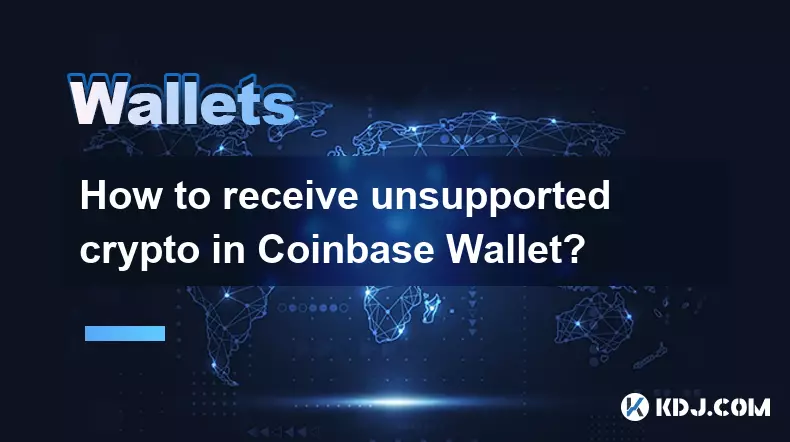-
 bitcoin
bitcoin $110415.485139 USD
-1.74% -
 ethereum
ethereum $3914.309383 USD
-1.58% -
 tether
tether $1.000075 USD
0.00% -
 bnb
bnb $1116.910315 USD
1.41% -
 xrp
xrp $2.562069 USD
-1.96% -
 solana
solana $193.888910 USD
-0.02% -
 usd-coin
usd-coin $0.999800 USD
-0.01% -
 dogecoin
dogecoin $0.192383 USD
-0.47% -
 tron
tron $0.296815 USD
0.66% -
 cardano
cardano $0.641286 USD
-0.18% -
 hyperliquid
hyperliquid $47.495653 USD
-0.35% -
 chainlink
chainlink $18.106533 USD
1.42% -
 bitcoin-cash
bitcoin-cash $561.296588 USD
0.00% -
 stellar
stellar $0.316591 USD
-0.21% -
 ethena-usde
ethena-usde $0.999227 USD
-0.01%
How to protect your Coinbase Wallet from phishing attacks?
Cybercriminals use fake emails, websites, and urgency tactics to steal crypto credentials—always verify URLs, enable 2FA, and never share your recovery phrase.
Oct 30, 2025 at 12:37 am

Understanding Phishing Tactics in the Crypto Space
1. Cybercriminals frequently mimic official Coinbase Wallet communications through fake emails, websites, and social media messages. These replicas are designed to look identical to legitimate platforms, tricking users into entering their private keys or recovery phrases.
2. Fake browser extensions impersonating Coinbase Wallet are often uploaded to third-party marketplaces. Once installed, these malicious tools can record keystrokes or redirect transactions to attacker-controlled addresses.
3. Scammers use urgency-based messaging such as “Your account will be suspended” or “Verify now to claim tokens” to provoke hasty decisions. This psychological pressure reduces the likelihood of careful verification.
4. Search engine manipulation leads users to counterfeit wallet portals when searching for “Coinbase Wallet download.” These sites host malware-infected installers or phishing forms collecting login credentials.
5. Social engineering attacks occur through direct messages on forums or Discord servers, where fraudsters pose as support agents requesting sensitive information under false pretenses.
Essential Security Practices for Wallet Protection
1. Always access Coinbase Wallet through the official app store or the verified URL: https://wallet.coinbase.com. Bookmark this address to avoid accidental navigation to fraudulent sites.
2. Enable two-factor authentication (2FA) using an authenticator app rather than SMS, which is vulnerable to SIM-swapping attacks. This adds a time-sensitive verification layer to your interactions.
3. Never share your 12- or 24-word recovery phrase with anyone, including individuals claiming to be from Coinbase support. Store it offline in a secure location such as a fireproof safe or encrypted hardware device.
4. Regularly review connected dApps and revoke permissions for services you no longer use. Unauthorized smart contracts may have been granted access during phishing sessions.
5. Install reputable ad-blockers and anti-phishing browser extensions that flag known scam domains and prevent automatic redirects to malicious content.
Recognizing and Responding to Suspicious Activity
1. Monitor transaction history closely for unexpected approvals or token transfers. Unfamiliar contract interactions could indicate a compromised session.
2. If you enter credentials on a suspected phishing site, immediately transfer all funds to a new wallet generated on a clean device. Assume the original wallet is compromised.
3. Report phishing attempts directly to Coinbase via their official reporting portal. Include URLs, email headers, and screenshots to assist their security team in taking down fraudulent assets.
4. Use blockchain explorers to verify the legitimacy of contract addresses before interacting. Cross-check them against community databases like Etherscan’s watchlist.
5. Educate yourself on common red flags such as misspelled domains, lack of HTTPS encryption, or requests for seed phrases. Awareness significantly reduces susceptibility.
Frequently Asked Questions
What should I do if I accidentally provided my recovery phrase to a phishing site?Immediately move all assets to a newly created wallet using a secure, uncompromised device. The moment your recovery phrase is exposed, the original wallet is at risk of complete fund drainage.
How can I verify the authenticity of a Coinbase Wallet update notification?Do not click links in notifications. Instead, open the app manually and check for updates within the settings menu. Official updates are delivered through trusted app distribution channels only.
Are there tools to automatically detect Coinbase Wallet phishing pages?Yes, browser extensions like MetaMask’s built-in phishing detector, Trustfall, and Netcraft can identify and block known counterfeit crypto sites based on real-time threat intelligence.
Can phishing attacks affect hardware wallets linked to Coinbase Wallet?While hardware wallets protect private keys from being extracted, phishing can still trick users into approving malicious transactions. Always verify the full details of any transaction before confirming on the device.
Disclaimer:info@kdj.com
The information provided is not trading advice. kdj.com does not assume any responsibility for any investments made based on the information provided in this article. Cryptocurrencies are highly volatile and it is highly recommended that you invest with caution after thorough research!
If you believe that the content used on this website infringes your copyright, please contact us immediately (info@kdj.com) and we will delete it promptly.
- Essex Post Office, 5p Coins, and King Charles: A Royal Mint Revelation!
- 2025-10-23 10:30:16
- Waymo's Newark Airport AV Tests: Alphabet's AI Gamble Pays Off?
- 2025-10-23 10:30:16
- King Charles 5p Coins: A Royal Flush in Your Pocket?
- 2025-10-23 10:35:18
- Solana, Crypto Advisory, and Forward Industries: A New York Minute on the Future of Finance
- 2025-10-23 08:51:22
- MAGACOIN: Ethereum Whales Dive into the Hottest Presale of 2025
- 2025-10-23 08:51:22
- Kadena's End of the Road? KDA Token Plummets Amid Project Abandonment
- 2025-10-23 08:55:34
Related knowledge

How to clear the cache for the Coinbase Wallet dApp browser?
Oct 27,2025 at 12:54pm
Understanding the Coinbase Wallet dApp Browser Cache1. The Coinbase Wallet mobile application includes a built-in dApp browser that allows users to in...

How to receive unsupported crypto in Coinbase Wallet?
Oct 25,2025 at 09:48am
Understanding Unsupported Cryptocurrencies in Coinbase Wallet1. Coinbase Wallet supports a wide range of cryptocurrencies, but not every token availab...

How to interact with smart contracts using Coinbase Wallet?
Oct 27,2025 at 12:00am
Connecting Coinbase Wallet to a dApp Interface1. Open the decentralized application (dApp) you want to interact with in your mobile browser or web bro...

How to solve connection issues with the Coinbase Wallet extension?
Oct 28,2025 at 12:02am
Troubleshooting Network and Browser Compatibility1. Ensure your browser is up to date. Older versions may lack support for modern Web3 protocols requi...

How to add the Optimism network to Coinbase Wallet?
Oct 30,2025 at 04:01am
Understanding the Optimism Network and Its Integration1. Optimism is a Layer 2 scaling solution built on Ethereum, designed to reduce transaction fees...

How to protect your Coinbase Wallet from phishing attacks?
Oct 30,2025 at 12:37am
Understanding Phishing Tactics in the Crypto Space1. Cybercriminals frequently mimic official Coinbase Wallet communications through fake emails, webs...

How to clear the cache for the Coinbase Wallet dApp browser?
Oct 27,2025 at 12:54pm
Understanding the Coinbase Wallet dApp Browser Cache1. The Coinbase Wallet mobile application includes a built-in dApp browser that allows users to in...

How to receive unsupported crypto in Coinbase Wallet?
Oct 25,2025 at 09:48am
Understanding Unsupported Cryptocurrencies in Coinbase Wallet1. Coinbase Wallet supports a wide range of cryptocurrencies, but not every token availab...

How to interact with smart contracts using Coinbase Wallet?
Oct 27,2025 at 12:00am
Connecting Coinbase Wallet to a dApp Interface1. Open the decentralized application (dApp) you want to interact with in your mobile browser or web bro...

How to solve connection issues with the Coinbase Wallet extension?
Oct 28,2025 at 12:02am
Troubleshooting Network and Browser Compatibility1. Ensure your browser is up to date. Older versions may lack support for modern Web3 protocols requi...

How to add the Optimism network to Coinbase Wallet?
Oct 30,2025 at 04:01am
Understanding the Optimism Network and Its Integration1. Optimism is a Layer 2 scaling solution built on Ethereum, designed to reduce transaction fees...

How to protect your Coinbase Wallet from phishing attacks?
Oct 30,2025 at 12:37am
Understanding Phishing Tactics in the Crypto Space1. Cybercriminals frequently mimic official Coinbase Wallet communications through fake emails, webs...
See all articles









































































